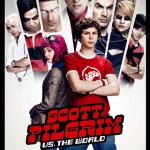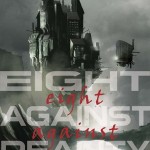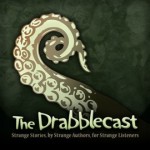We’ve all been there. You invest your time and money in a movie or read a book where, for most of the time you’re sitting there, you’re really enjoying it. It may not be the best you’ve ever read or seen, but you’re pretty sure you’d give it a thumb’s up to someone asking your opinion on it later. But when the ending arrives, you’re left with your jaw hanging open at how pointless, annoying, or just plain stupid the ending was, to the extent that it ruins the whole movie for you that the creators really couldn’t come up with something better than that. It really sticks in your mind, but not in a good way, and you’re left wandering the earth seeking out others who have experienced that movie or book so you can commiserate at what an incredibly stinky ending it was.
Well, this is a list of some of the most prominent examples of this from my movie and book experiences. Keep in mind that these are only examples of what I have personally come across, not the worst endings of all time. If you have any endings you’d like to complain about, I encourage you to leave them in the comments.
Obviously, this list will have lots of SPOILERS SPOILERS SPOILERS GALORE , since there’s no way I can write a list complaining about endings which doesn’t tell you what the endings are. So if you’re worried about spoilers, maybe you should stop here, or you could scan the titles and only read the details for those you’ve read or don’t care about.
1. The Dark Tower
by Stephen King
Premise
A cowboy and friends travel a long, long way, facing insurmountable odds and traveling to many places (including Maine)Â just to find a big tall building for no apparent reason.
Overall
Yes, I’m sure it’s a shocker that Stephen King tops out the bad endings list, as he’s notorious for writing himself into corners and then writing whatever dumb resolution comes to mind at the time. Usually his ideas are great, his characters are well developed, and the ending most often invokes a WTF reaction. Which is why he gets the honor of having 4 stories in this top 10 list.
This series has spanned most of Stephen King’s career to date, the first novel “The Gunslinger” was serializeded in F&SF from 1978-1981 and the final novel was finally published in 2004. I generally liked the series, though I think book two “The Drawing of the Three” was my favorite. In the later books, there are major cases of Stephen King pretentiousness leaking into the story. By the time he hit mid-series he was famous enough that he could pretty much do whatever the hell he wanted, regardless of how stupid it was. This includes injecting himself as a character into the series of the book, revered as a god by the gunslinger himself who sees him as the creator. And, in typical King fashion, many of the books suffer from word bloat, expanding to more than double the size they’d really need to be.
The Ending
Long before the end of the series, you know that the final adversary will be the Crimson King. He’s one of King’s favorite villains, having made a major appearance in some of his other books, including an on-screen role in Insomnia. But, as time goes on, you wonder how the heck Roland the gunslinger and his group of other gunslingers will ever be able to defeat him. The Crimson King is extremely powerful, is actually undead, and is locked outside the Dark Tower that has been Roland’s obsession for most of his life. He wants Roland’s guns as a sort of talisman, but we’re told there’s no way to kill the Crimson King, so it seems like Roland’s just walking into his hands.
And then, a couple hundred pages before the end, Roland finds a note from Stephen King referring to a “deus ex machina”. This does not bode well. And sure enough, Roland’s group gets a new member, a mute artist. His sketches are so lifelike that you can hardly believe they’re not real, and if he draws something that he sees in real life, and then erases it, the real thing disappears too. Cue magical unforeseen ability added slapdash at the last minute. You may as well call the guy “Patch” because he exists solely to patch the gaping hole in Stephen King’s plotline. And apparently he realized it himself, hence his note to Roland warning him of it. Yup, sure enough, the artist is the one to kill the Crimson King by drawing a picture of him. Just drawing him in pencil doesn’t work this time though. He has to use blood for the eyes, which doesn’t erase, so the Crimson King is still around, he’s just a bodiless presence.
And as if that lame final conflict weren’t enough, when Roland finally enters the Dark Tower, he finds it in memorabilia of his own life, and then suddenly he finds his life rewound to a battle he fought decades ago when he lost his battle horn which the Tower has told him is a powerful talisman.ÂÂ And so he begins his quest all over again.
In a way this makes sense. The series began with Roland pursuing his quest alone, and so it’s somewhat fitting for his quest to continue alone at the end. But this is little better than the cliched and annoying “it was all a dream” ending. In the end, none of it really happened, so I’ve just wasted my time reading seven friggin books that the author has just unwritten. Roland has lived for his quest for so long that he could never be happy without his quest, but I just figured that would mean he would die at the end, or would find a new completely different quest, not just take up his whole same quest all over again.
I’m much happier with this one if I just pretend that the pages are blank as Roland approaches the Tower.
2. Dreamcatcher(the movie)
directed by Lawrence Kasdan, based on book by Stephen King
Premise
Childhood friends on a hunting trip (in Maine) fight off an invasion of alien shit weasels lead by a bodysnatcher.
Overall
Yup, another Stephen King, but this time, the movie adaptation of his book. The book adaptation was quite nice, and much of the movie was done very well also. There were some really great actors, including Morgan Freeman and Jason Lee in one of my favorite of his roles as Beaver. But the movie made some major changes from the book. The sort of changes that, if you’ve also read the book, make you wonder what the holy hell they must have been thinking to have done it. It’s still worth seeing, because many of the really chilling visuals are well adapted, and even some of the new stuff is cool. But the major changes kept the movie adaptation from being really great.
The Ending
The most important character in the story is Duddits, a friend these four guys made in childhood, a Down’s Syndrome kid who was more than he appeared. A recurring theme common in many of King’s books is that people with conditions that would often be called mental disabilities turn out to be special in some extraordinary way, often exhibiting psychic powers. In both the book and the movie, Duddits’s powers are somewhat contagious, gifting his friends with extra abilities, like psychic powers and the ability to find things lost. In both cases, he is integral to both the premise and the resolution of the movie, being the one who is most able to stand against Mr. Gray the body snatching alien.
In the book, Duddit’s contribution to the climax is a very powerful scene. In the movie, well, Duddits turns out to be shapeshifting alien fighting for the side of good, who comes and has a battle to the death with the evil Mr. Gray. I am not making this up.
3. Mulholland Drive
directed by David Lynch
Premise
Er… um… well, if you figure out what this movie is about, let me know.
Overall
I really liked Twin Peaks TV show, created by David Lynch, so I wanted to watch this one all the way through, to give him the benefit of the doubt. Halfway through the movie, two of the actresses swap roles for no apparent reason, and there’s a gremlin living behind a convenience store. Throughout the whole movie, it always seemed like I was just missing one revelation that would make all the previous nonsense come together in some meaningful way.
The Ending
Like I said, throughout the whole movie, I always felt like I was just on the verge of understanding what the hell was happening. The characters were interesting, despite their unexplained role swap. The gremlin behind the convenience store and all that weird stuff was interesting, but all sort of absurd and random, but not in a way that quite managed to make sense even in an absurdist light.
So I’m watching, watching, hoping that at the very end, some light will be shed upon the random hodgepodge that this movie has built up for itself. And what do I get? Definitely not what I was hoping for. Earlier in the movie, there had been a couple tourists, older, overweight folks in gaudy clothes. Well, these same people reappear as semitransparent specters, maybe 4 inches tall, creeping under someone’s bedroom door, giggling gleefully, and advance on the bed. And then (if I remember correctly) you get one more shot of the gremlin behind the convenience store. If anyone has any idea what was supposed to have happened, please do let me know.
4. Stardust (the novel)
written by Neil Gaiman
Premise
Lovestruck boy saves heavenly body from cannibal witch.
Overall
I really like Neil Gaiman’s writing, and in particular I really like this story, but this is one of a rare case when I think a movie adaptation of a book did better than the book itself. I’m a sucker for a good quest, and Tristran’s quest to find the fallen star to give to the girl he thinks he loves is a great one. I love the interaction between the very human star (named Yvaine) and the young Tristran. I love the comedy, including that provided by Robert Deniro as the cross-dressing Captain Shakespeare. Michelle Pfeiffer did a great job playing the witch.
Much of the book and the movie were similar, but the ending is drastically different, and the movie ending was much improved by the movie adaptation.
The Ending
Stardust is one of the few cases I’ve ever seen where I enjoyed a movie adaptation of a book more than the book itself. The most major villain in both stories is the witch who intends to eat the heart of the human-formed star to regain her youth and magic powers. She is responsible for setting up many of the obstacles in the story, and she is bad ass.
In the movie, they end up having a huge fight with the witch, and she pits her magic against their heroism. Most memorable of this is that she uses a voodoo doll in water to kill one of the major characters, and then uses the doll to reanimate his body. It’s a great effect, with the ghost of the dead man looking on from the side as his sopping wet body performs impossible moves without even looking at what it’s doing, its head dangling limply, obviously more pulled along by his sword hand than in control of it. This is an epic fight scene, and they’re finally only able to defeat the witch when Yvaine shows her unforeseen ability to shine so brightly that the witch burns right up. Okay, that last bit is a bit cheesy, but it worked well enough.
In the book, she gives her heart to Tristran (metaphorically), and when she finally comes face to face with the witch at the end, the witch says something along the lines of “You’ve given your heart to another, so it’s not mine to take.” Lame, what a waste of an awesome villain.
5. The Ring
directed by Gore Verbinski
Premise
VHS haunting ghost murders viewers. (This is the real, little known reason that VHS isn’t popular anymore)
Overall
The movie had an interesting, classic horror style. There are a lot of cool images here, especially in the ghost’s final manifestation. The eventual reveal of what the image of the ring represents is a cool one. Unfortunately, a lot of the details are inconsistent with each other, especially with a chicken-and-egg relationship of the question of whether the girl was killed because she had terrible powers or if she had terrible powers because of the way she was killed. But overall, most of the movie is a decent horror flick.
The Ending
The main character’s friend is a reporter investigating the phenomenon of the disturbing tape–if anyone watches it, they die a gruesome mysterious death 7 days later. The friend has a child who sees the ill-portented video near the beginning of the movie. So she and her reporter friend set out to solve the mystery of the video to find out where it comes from, what the odd images mean, etc… That search for knowledge is the entire point of the main plot of the movie, and they do eventually find it’s origin and seem to make piece with the ghost that it originates with. And then the ghost shows up and kills the reporter, completely unexpectedly. That part is fine, and is in fact one of the strongest images in the entire movie, with the ghost climbing out of the TV set, her hair completely covering her face. So it turns out that their knowledge didn’t do them a damned bit of good.
What really bugged me, though, is the reveal of what will actually save them. The ghost doesn’t give a damn if you know what the video is about. All she wants is for you to copy the tape and give it to someone else. If you do this, then you will not die. Sound familiar? Yeah, that’s the subject of about a million email chain letters “send this on or you will die/have bad luck/lose money”. Why couldn’t they have just left that list bit off and quite while they were ahead?
6. It (the novel)
written by Stephen King
Premise
Childhood friends (from Maine) reunite (in Maine) to kill a shapeshifting clown.
Overall
Yup, a third King entry. I haven’t actually seen the movie version of this, but the book version I quite enjoyed. It is very long, one of his longest, topping over 1000 pages. It was one of the very first King books I ever read, back in junior high, lots of really scary moments, and the action is pretty well interspersed throughout. The story flashes betweenthe past, when a group of 6 friends (5 boys, 1 girl) first came across this shapeshifting boogey monster type creature who’s been causing a series of deaths across the city of Derry, and the present decades later, where they have gathered again to drive the monster back once again. I’d recommend the book if you feel like a long read.
The Ending
The very very ending of the book with the confrontation with It beneath Derry is actually fine, told in parallel with the characters as adults and children. It’s the part that comes a little while earlier that really bugs me. When they are children, as they’re crawling through the tunnels, headed for their destination, they’re all losing heart in the face of the terrors ahead of them, and they’re just about ready to turn around. They stop, and are going to completely give up, but they find a way to get up the guts to go on. How? Well, all 5 of the pre-teen boys have sex with the girl. And after they all boink her, they magically find the will to go on Um…. where the heck did that come from? The scene was gratuitous, awkward, weird, and just plain added nothing to the story. Each of the characters had a role to play in the story, a reason why they were chosen by fate to face up against the evil monster, and with this turn of events it seems that her sole purpose in the group was to be their pre-teen sex object.
7. Under the Dome
written by Stephen King
Premise
A town (in Maine) is trapped inside a giant snow globe.
Overall
I reviewed this one last month, so I won’t go into too many details. Overall, good story, though quite long, interesting situation, good characters.
The Ending
This is reiterating a bit from the review. The people under the Dome are trapped in there for weeks. Most of the time people are dealing with each other, interpersonal problems, and only a couple people bother trying to figure out how to get out from under the Dome. Finally a few weeks later, a few people get the idea to find the source of the impenetrable shield surrounding their town. Finally they find it, a small device up on the highest hill in town. They try to move it, but it won’t budge, but touching it gives them a telepathic connection with strange lifeforms and they come to the conclusion that they aliens are children who have put the device there as a sort of game. The people try to throw a lead shield on it to suppress it’s signal, but the lead melts. And then they give up until the end of the book. What a bunch of losers to give up so easily? Try blasting it with dynamite. Try pouring acid on it. Try hitting it with a sledgehammer. Trying putting a lead dome around it, but at a distance so it is not touching the device.
But no, these people just decide there’s nothing they can do and go back to dealing with the interpersonal problems. A few weeks later, the proverbial poo hits the fan when the town’s meth lab, surrounded by a stockpile of most of the town’s propane, explodes, filling the down with a fiery inferno, Killing all but 30 people and 2 dogs. Fortunately the fire goes out on its own. Unfortunately, this is because there’s so little oxygen left to burn. On the outside the military has set up huge industrial fans, which provide enough force to push a bit of fresh air through the Dome so the survivors are those who can make it to that part of the Dome before they suffocate.
For the next couple chapters, they just sit in that area, gasping for breath, as they die one by one. Finally someone comes up with the idea to go back to the device, connect with the aliens and simply beg for their lives. And it works, solving everyone’s problems. So… I bet they were kicking themselves for not having tried that earlier, they could’ve saved many thousands of lives, instead of just a couple dozens. Seriously, people!
8. Evolution
directed by Ivan Reitman
Premise
Hyper-evolution! Take that, Intelligent Design!
Overall
This was a really cool idea, with a “hive” of aliens that are able to evolve amazingly quickly from onehostile form to another, from microorganisms, to giant flesh burrowing mosquitoes, and on. There’s a lot of good comedy here too, including great lines an ex-researcher science teacher played by David Duchovny, and some good ones from MadTV alumnus Orlando Jones. Sure, the premise of the movie isn’t really plausible, including a pretty shaky understanding of the actual scientific principle of evolution, but if you’re willing to suspend your disbelief the idea is really fun, and the special effects are generally well done.
The Ending
As the movie goes on, the alien lifeforms just get worse and worse, eventually evolving into ape-like analogs who can use tools, but they go even further, merging into one gigantic amoeba like blob which begins to crawl across the countryside absorbing everything. So our heroes, David Duchovny and his students are in a classroom trying to think of some way to stop the aliens. Together they come up with an absolutely ludicrous idea, which of course turns out to be the key. They bring out a periodic table, and point out that humans are carbon-based (point to the “C”), and that our poison is Arsenic (point to the “As”, down 2 and right 1). The aliens are nitrogen based (point to the “N”), so therefore their poison must be selenium (point to the “Se”). One of the students remembers that Selenium is the active ingredient in Head and Shoulders dandruff shampoo. So they manage to fill an entire fire truck with Head and Shoulders, and blast it up the bunghole of the big blobby thing, finally killing it.
There are so many things wrong with this:
-Humans don’t have just one poison. Arsenic is one that’s historically popular, but lead is poisonous to us, as is mercury. There are lots of elements that will easily kill us if ingested, and that’s not even taking into account compounds made of these elements.
-While the periodic table is a handy visualization, and separates out sections for metals, and nonmetals, and other handy separations, an arbitrary patterned jump is not meaningful.
-I really doubt a fire truck could pump shampoo well(though I think I could forgive this for the sake of humor if they’d given at least a show of making the rest make sense).
9. 9
directed by Shane Acker (not to be confused with Nine, a completely unrelated movie which also came out in the same year)
Premise
Rag dolls vs. war machines.
Overall
I really enjoyed this movie. Lots of good voice acting, including Elijah Wood, John C. Reilly, and a rare appearance by the ever-strange Crispin Glover.
This movie has a lot of great things going for it. Early in the movie, they accidentally awaken a sentient war machine by snapping a device to it. These little rag dolls are up against mechanical minions slapped together by the war machine that has apparently killed all of humanity. This was a great one to see in theaters because the sheer scale of the killing machines is terrifying, and even more so if it’s on the big screen so you feel no bigger than the rag dolls. The creature design is especially fantastic: the war machine has limited materials, so it cobbles together its minions from spare parts lying around, each one uber creepy and almost familiar in its mimicry of real animals, yet utterly bizarre.
One of the criticisms oft leveled against the movie is that the characters are one-dimensional. But that’s really a criticism for this particular movie, because the reason for that simplicity of personality is revealed: all 9 rag dolls have minds which are merely fragments of a single human. So each of them is a personality trait more than a personality of itself.
The Ending
As the movie goes on, the war machine catches the dolls one by one and in a flash of light sucks their life away with the small device attached near the beginning, and you see an internal view of them on the war machine’s viewscreen, sort of like a soul. 6 (the eccentric striped doll played by the awesome Crispin Glover) stops them from killing the machine when they have an opportunity, which to me seemed like a major plot point. He says that to destroy the machine would not solve their problems. His protests are enough that the war machine sucks out his soul in the meantime. He says that their friends are still alive inside the machine and destroying it would destroy them too.
So they keep running, and it picks off more and more of them. The way I interpreted this as time went on was that they should surrender and allow the machine to suck all of their souls away so that all 9 of them are all inside the machine. Remember, they are 9 fragments of one human mind, so if you recombine them inside the mind of the machine, maybe the human can take back over.
So how do they resolve it? Well, they grab the device off of the machine and suck the souls back out. This kills the war machine. Somehow they fiddle with the device, and it releases all the captive souls, and it seeds the clouds (or something) and rain begins to fall. Raindrops land on the camera and in the magnification, you can see microorganisms crawling around in them. It’s never explained why the release of a handful of rag doll souls would make it rain, or why it would return life to the planet. Unexplained, nonsensical, and completely against the most obvious conclusion that they all should have joined inside the machine to reunite.
10. The Faculty
directed by Robert Rodriguez
Premise
Misfit students who attack their teachers avoid life in prison by saying that it was self defense against alien bodysnatchers.
Overall
I’m not claiming that this is high quality cinema, nor that it’s even a particularly great example of an alien horror movie. But it’s a decent specimen of an alien horror movie, and you’ll probably enjoy it if you don’t go in with too many expectations. It was an early movie in several stars careers, most notably Josh Hartnett and Ali Larter, and had plenty of other stars like Bebe Neuworth (Lilith on Frasier), Robert Patrick (T-1000 in Terminator 2), and Elijah Wood.
Bodysnatchers take over the teachers in this school, and then take the popular kids one by one. The last ones left as regular humans are the misfits, the drug dealers, the losers, the new kids, and they’re the ones who end up having to fight the aliens and try to save the world. Yeah, the premise is a bit cheesy, and a bit wish fulfillment as well, but really isn’t a bad setup for a movie.
The Ending
During the movie, they discover all these little ear-worm aliens that are taking over everyone’s bodies. They hypothesize, based on movies that they’ve seen, that there must be a queen, and that killing the queen will kill the rest of them. And, of course, this turns out to be oh so conveniently true. But why would this be true? When I think “queen” I generally think of ants or bees, who have the one egg-laying huge insect who creates all the offspring. But killing her doesn’t kill the rest of them. They will raise a new queen from one of the eggs if they need to. And even if the hive didn’t survive, they still wouldn’t die instantly. It just bugs me when characters come to such a ridiculous conclusion based on no information whatsoever, and it turns out to be true for the sake of plot convenience.
 Author, dancer, hypercreative malcontent and more, “Satyr”Phil Brucato has been a professional writer for 20 years. His work spans from game design with White Wolf Game Studio, West End Games, Laughing Pan Productions, and Silver Satyr Studios; to interviews and articles for BBI Media and Realms of Fantasy Magazine; essays in Disinformation Press; and fiction in various venues. Oh, yeah – and a webcomic called Arpeggio, too. Also, check out his Facebook Author page, and Steampunk Tales.
Author, dancer, hypercreative malcontent and more, “Satyr”Phil Brucato has been a professional writer for 20 years. His work spans from game design with White Wolf Game Studio, West End Games, Laughing Pan Productions, and Silver Satyr Studios; to interviews and articles for BBI Media and Realms of Fantasy Magazine; essays in Disinformation Press; and fiction in various venues. Oh, yeah – and a webcomic called Arpeggio, too. Also, check out his Facebook Author page, and Steampunk Tales.




![s551815767_143845_1164[1]](https://www.diabolicalplots.com/wp-content/uploads/2009/08/s551815767_143845_11641.jpg)


